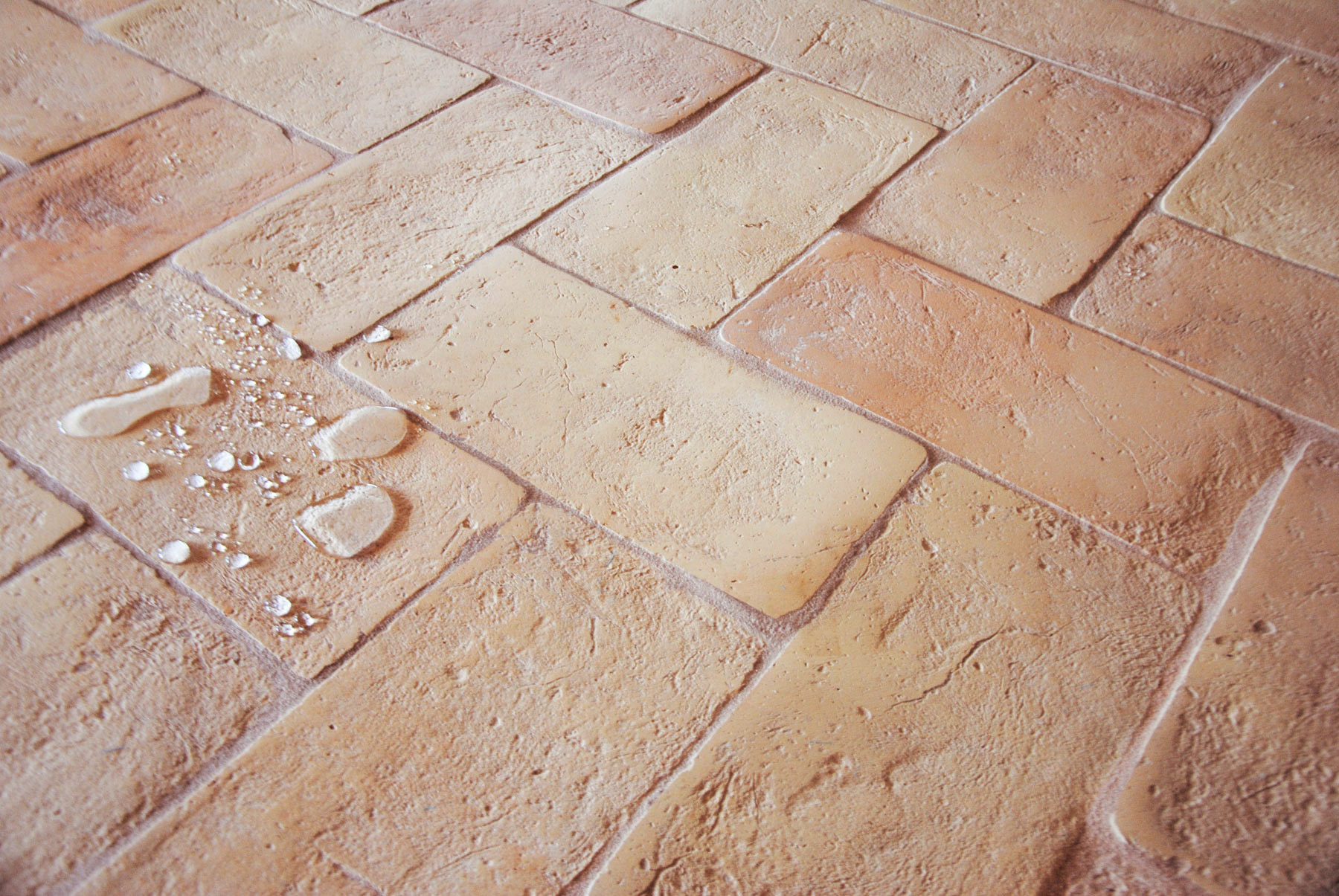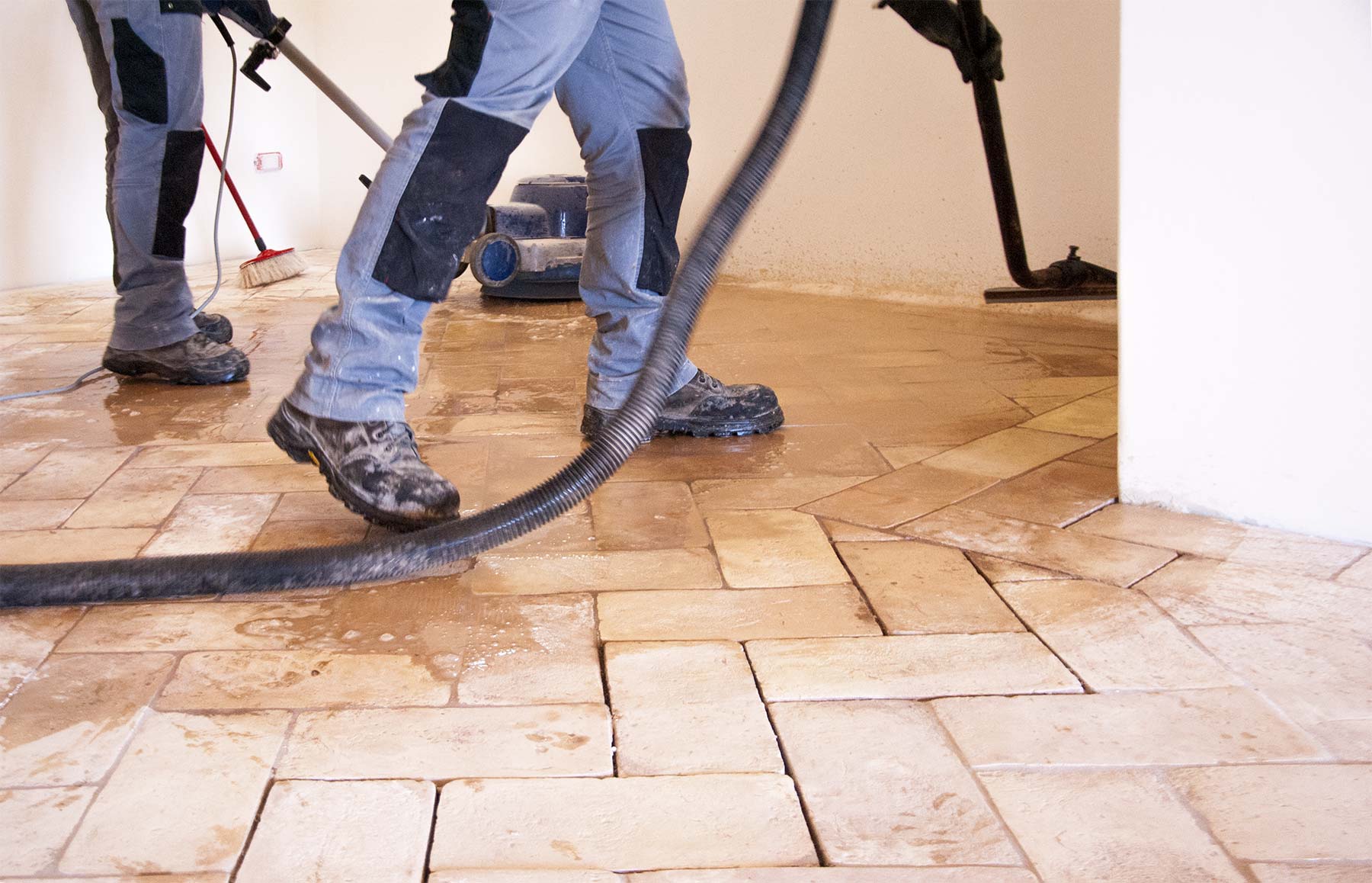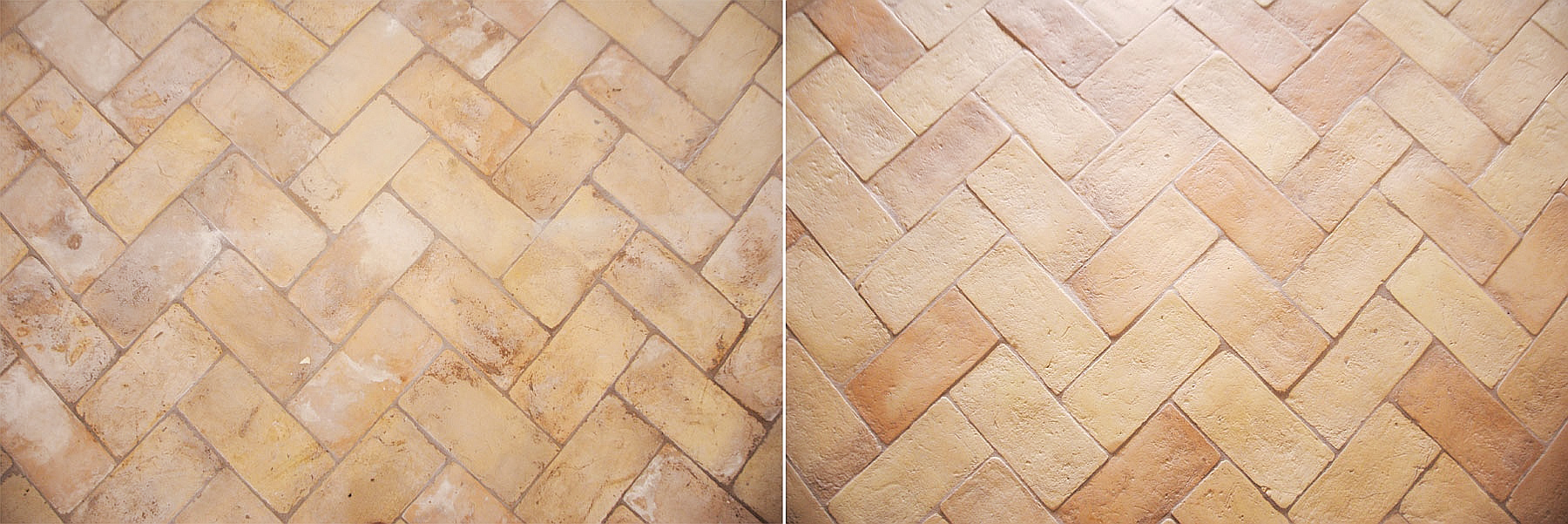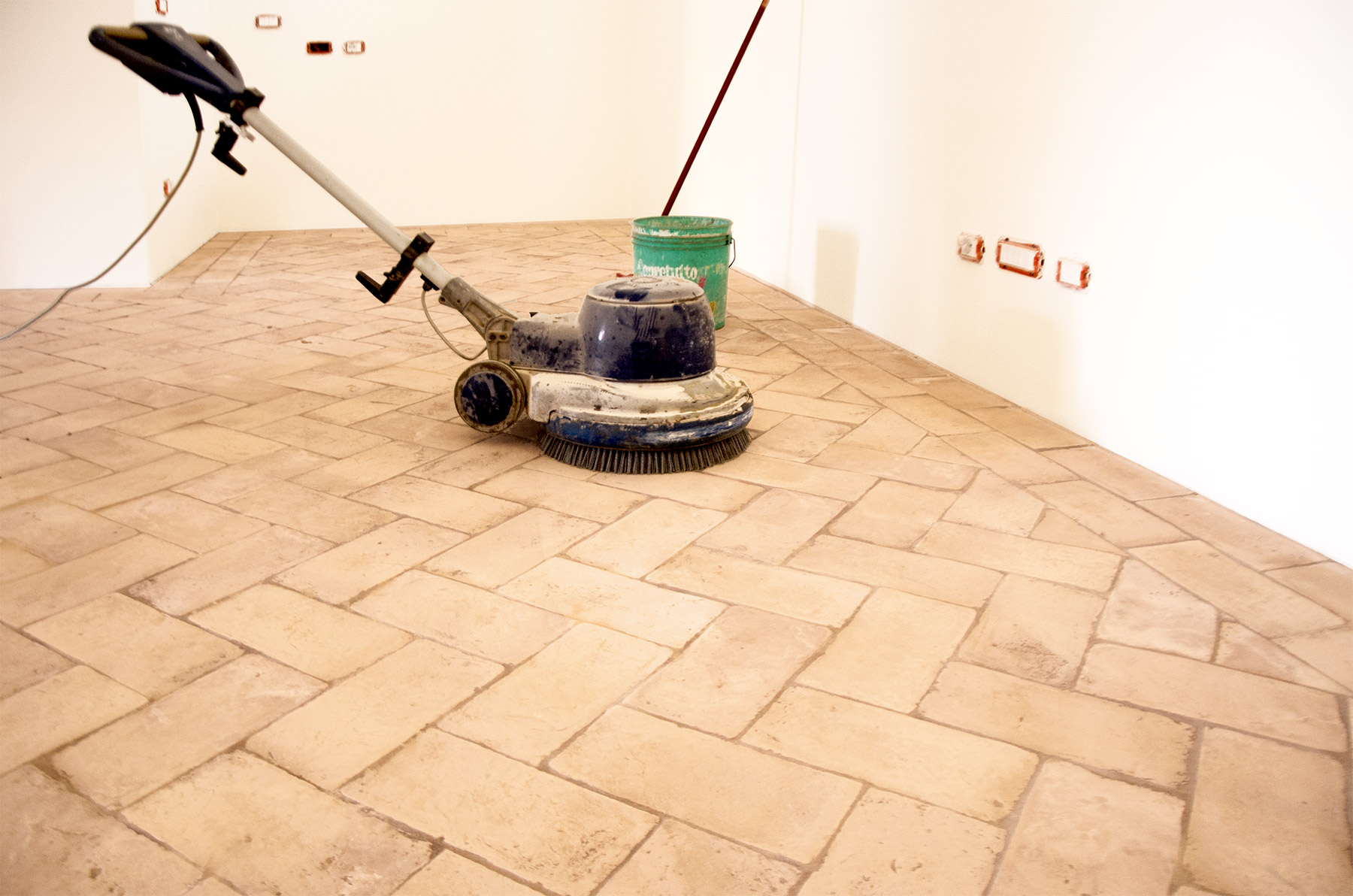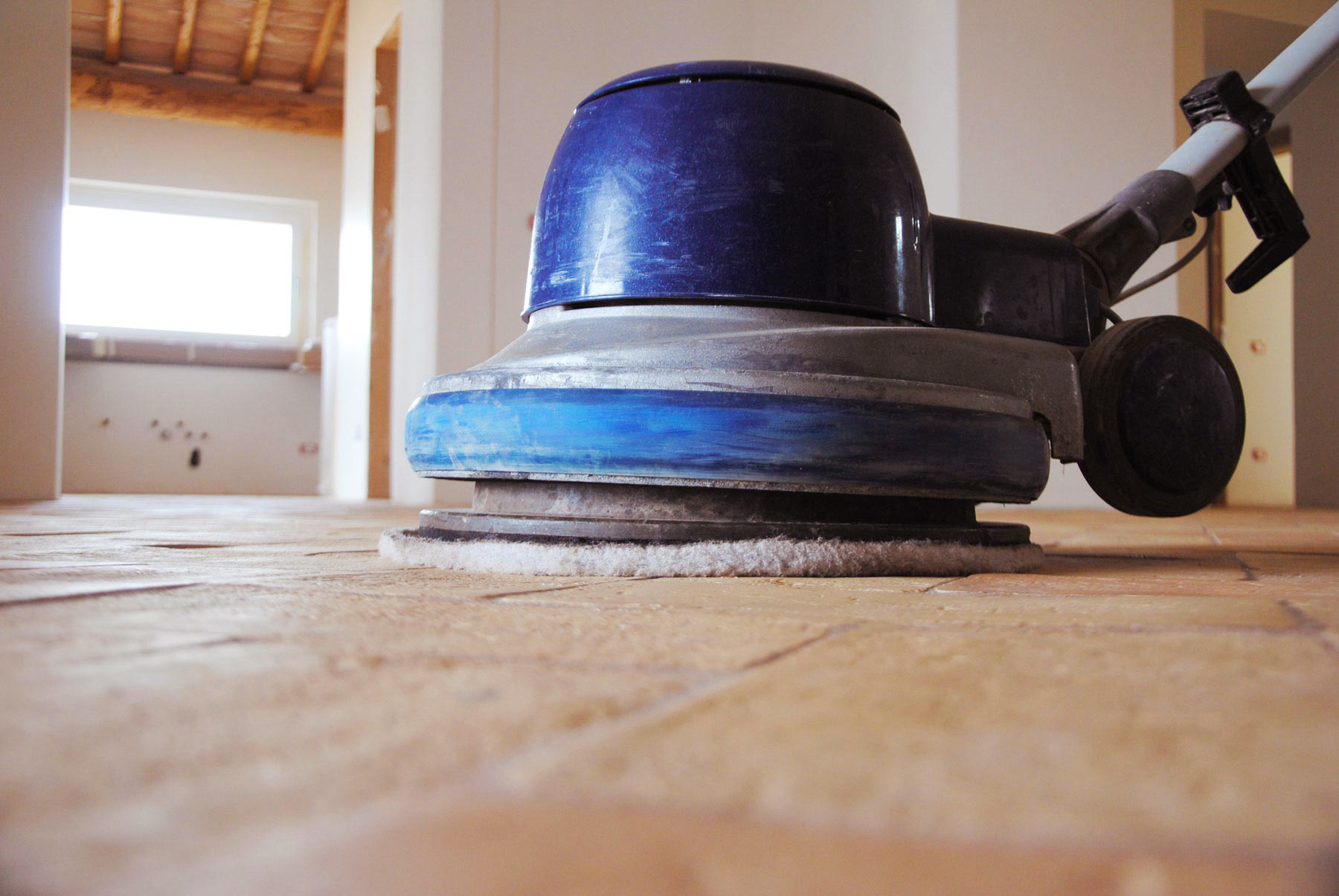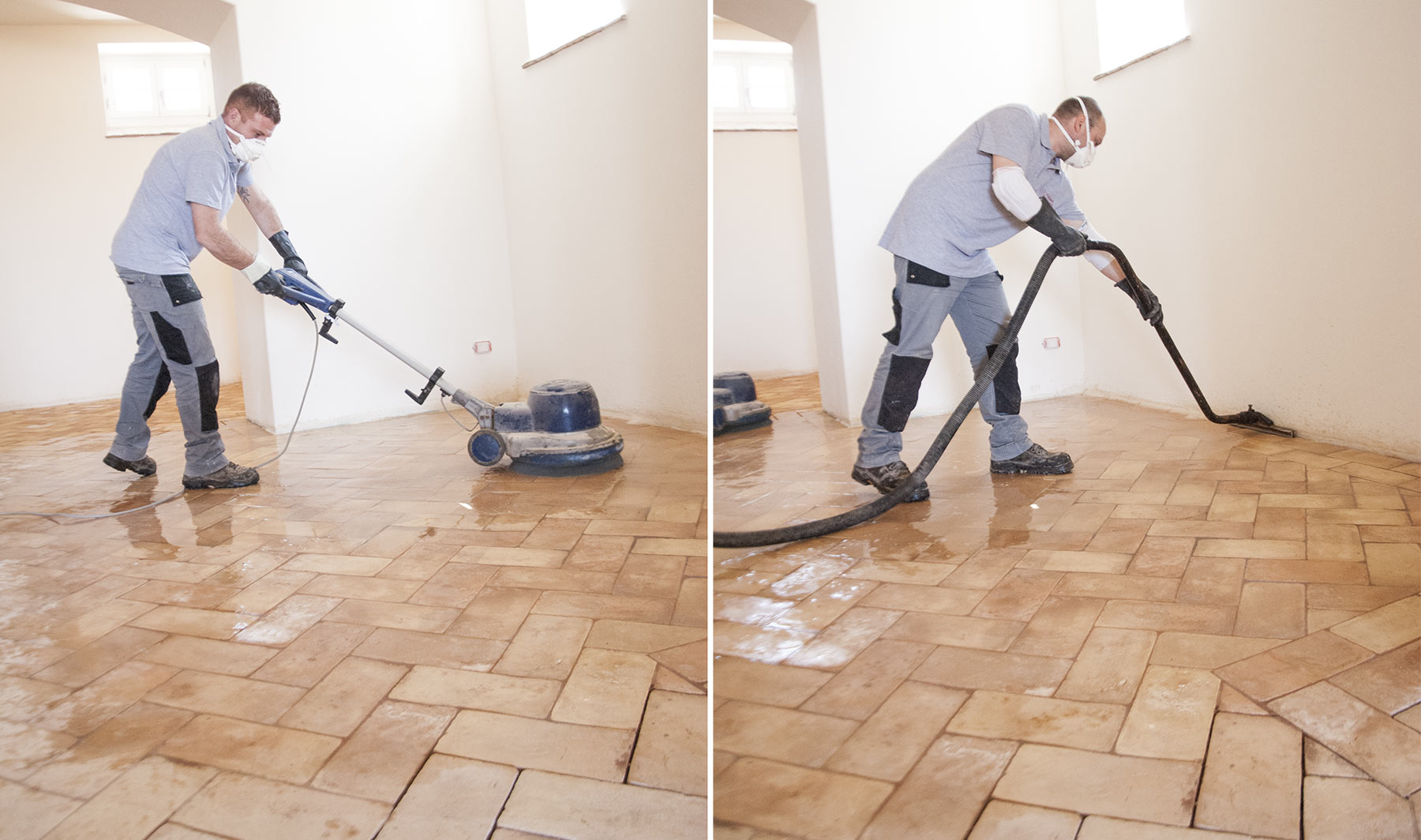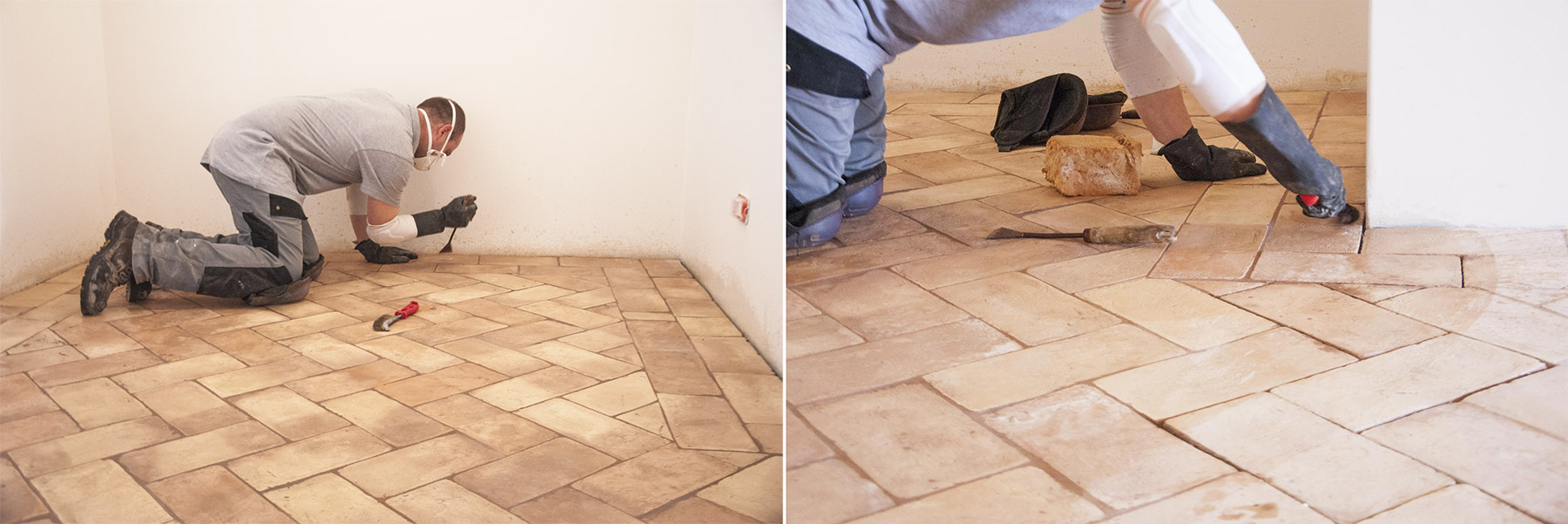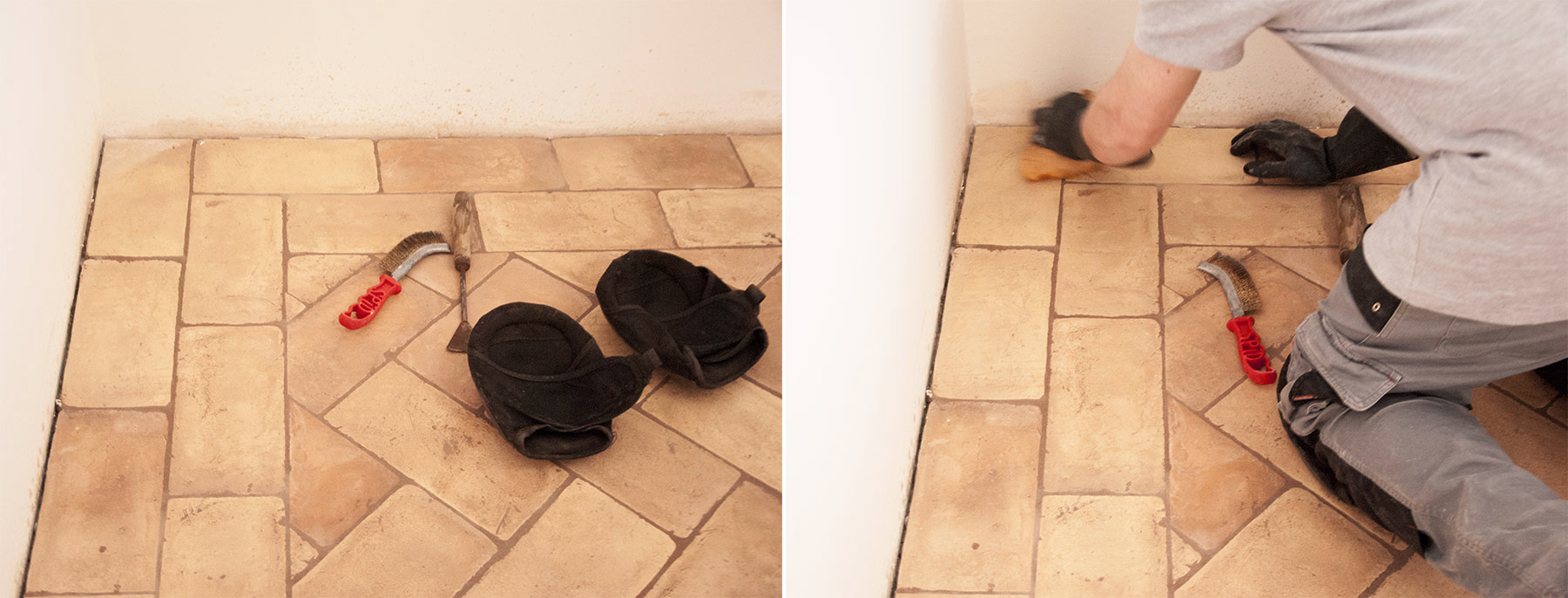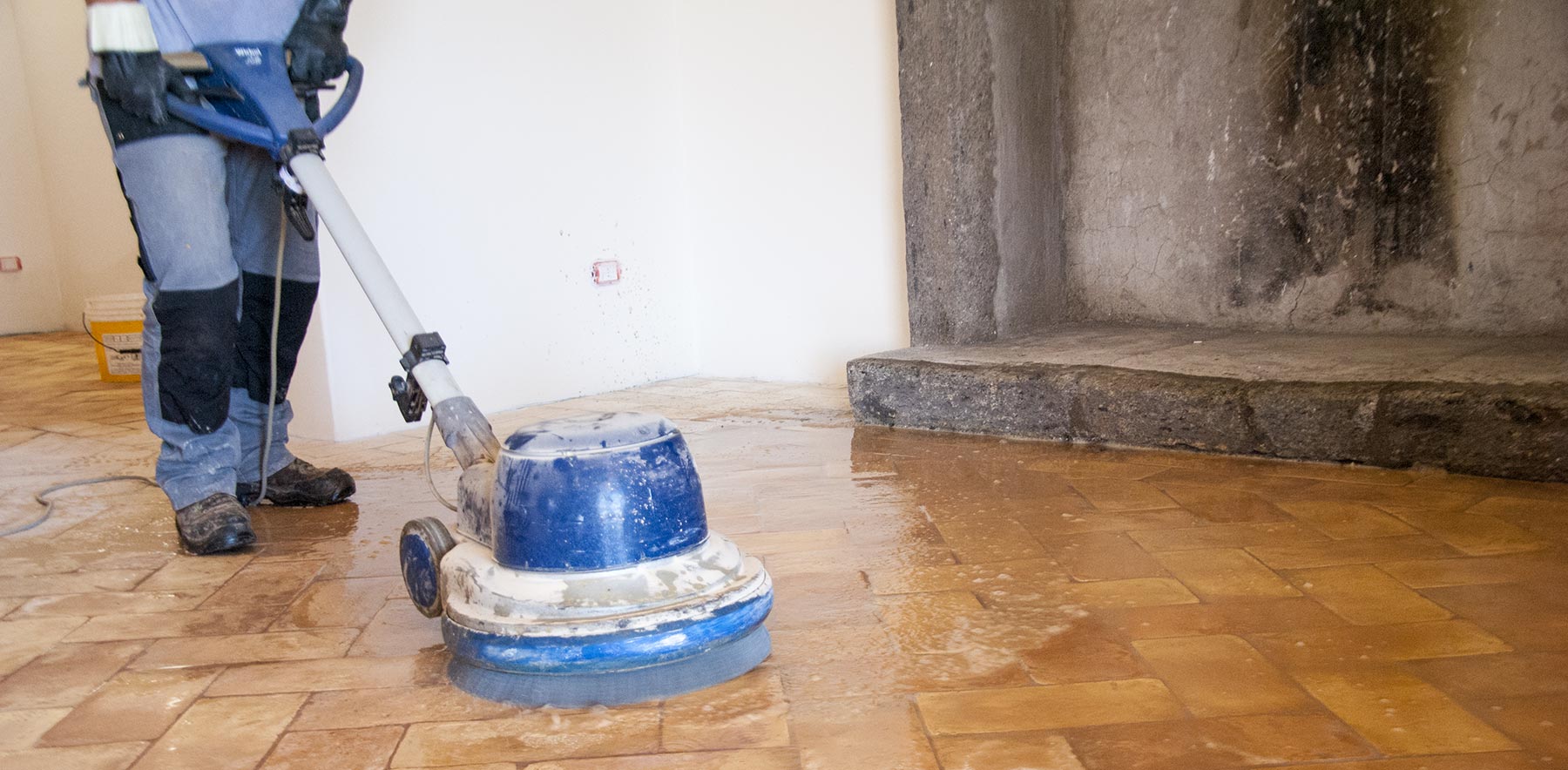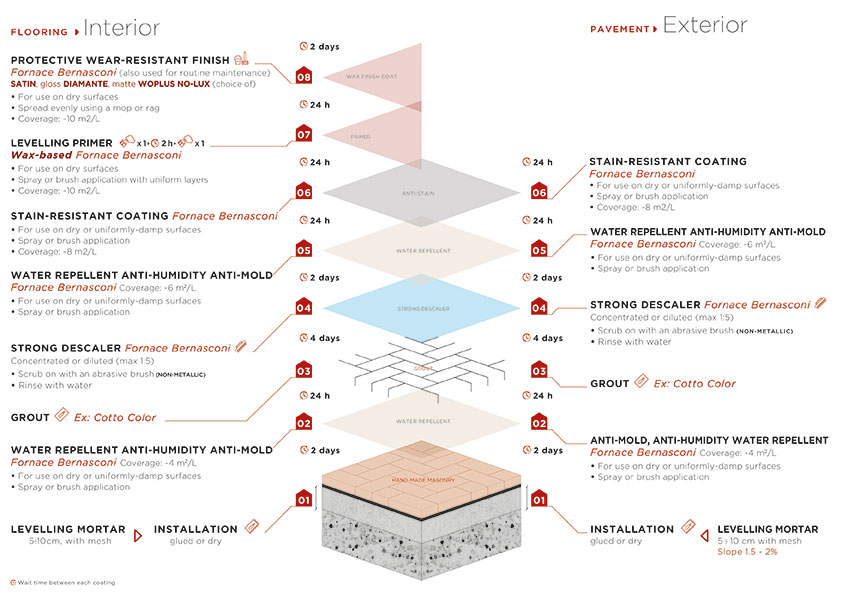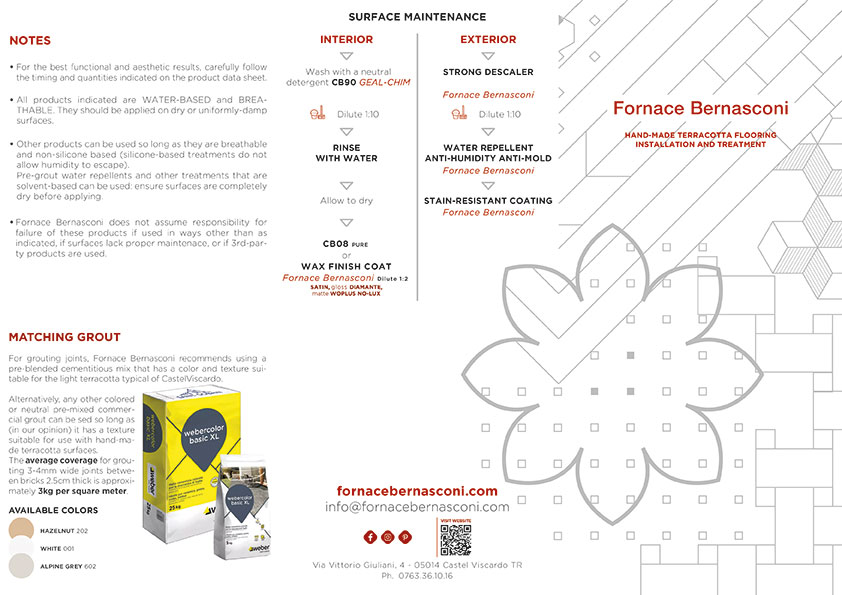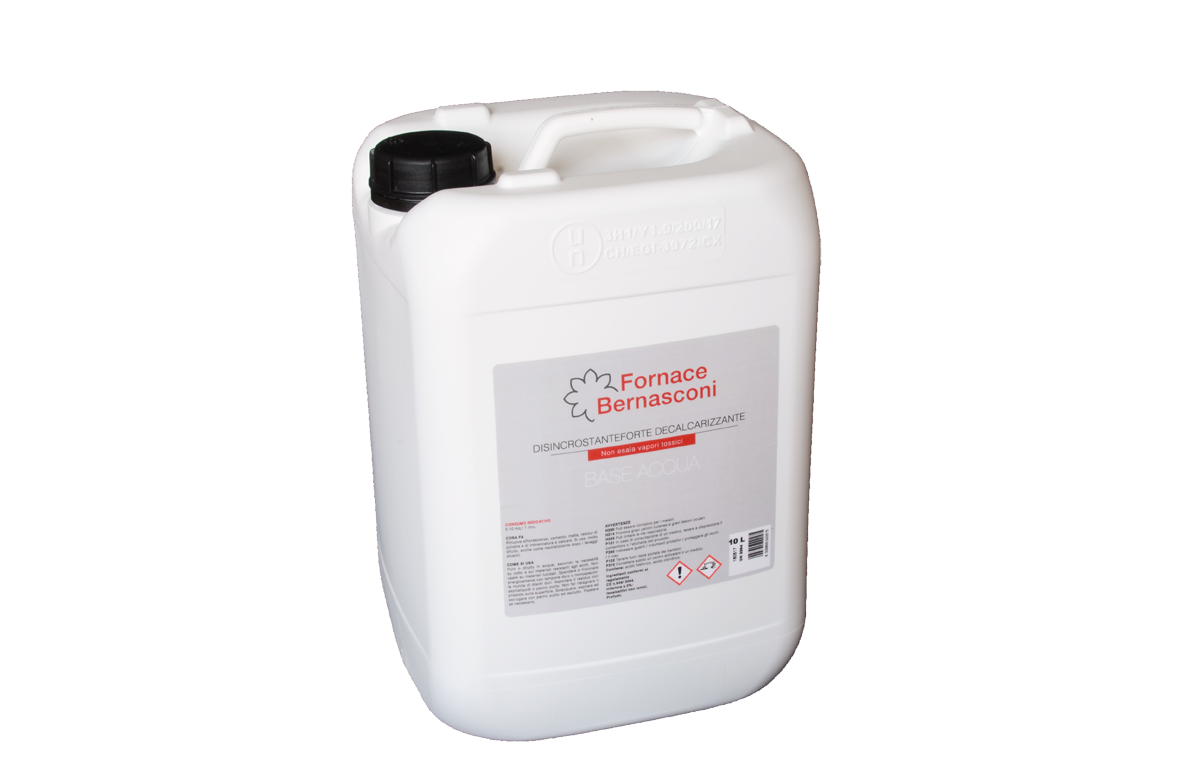The Treatment of Terracotta
Handmade terracotta is a live and porous material. It has a natural capacity of high absorption (approximately 18% of its weight).
Terracotta treatment is usually carried out after laying and grouting. This waterproofs the floor, meaning that maintenance and cleaning is made easier to maintain the natural beauty of the tile.
A good treatment protects from dirt but does not distort the features of the brick.
For the treatment to give the best technical and aesthetic results, the product should be used in the right way. There is a full course of treatment available for washing, protection and finishing.
The washing is carried out with buffered acid and serves to remove residual cement, arising from the laying and grouting and salt peter from the dust.
It is left to work for a few minutes and then brushed vigorously. The last washing stage is to rinse with clean fresh water.
Protection and Finishing of Terracotta
The protection phase involves applying specific water-repellent and oil-repellent products to the terracotta floor. These are mostly impregnating and breathable materials that provide the terracotta with stain resistance and waterproofing against oily and aqueous substances. Chemically, these products can be either water-based or solvent-based. Fornace Bernasconi prefers and recommends the use of water-based products: more natural, chemically less invasive, and therefore aligned with the terracotta certified for bio-building.
The finishing step completes the anti-dirt and wear protection and gives the terracotta the desired final appearance. This involves natural waxes (liquid and/or beeswax paste) that provide the brick surface with a glossy (shiny), matte (maintains the natural look), or satin finish (between glossy and matte) of choice. It is during this phase that, by using colored or opaque waxes, it is possible to alter the natural color of the terracotta, shifting it to darker and more intense shades.
Wax finishes are generally not applied to outdoor floors because weather conditions would not allow them to last over time. In such outdoor living spaces (dinners, banquets, or similar), only the water-repellent and stain-resistant (oil-repellent) treatments are applied.
The treatment is a fundamental and essential step for the success of a handmade terracotta floor, both aesthetically and practically (protection and durability). Fornace Bernasconi prefers as natural treatments as possible, which do not alter the appearance and color of the terracotta but protect it over time and ensure easy maintenance. Fornace Bernasconi’s decades of experience and passion for terracotta will assist you in choosing the best treatment according to your aesthetic and technical needs.
Outdoor Terracotta Treatment
For outdoor use, the choice whether to treat the handmade terracotta floor is left to the customer: if it is a patio or an area where banquets are held and cleanliness is desired, the recommendation is to treat with water- and oil-repellent products. If it is a sidewalk or an outdoor space where constant cleanliness is not essential, the recommendation is not to treat it: in this case, the terracotta floor will age naturally and will still be aesthetically pleasing. In any case (which is very important), outdoor installations are recommended to have a slope of 1.5/2%.

